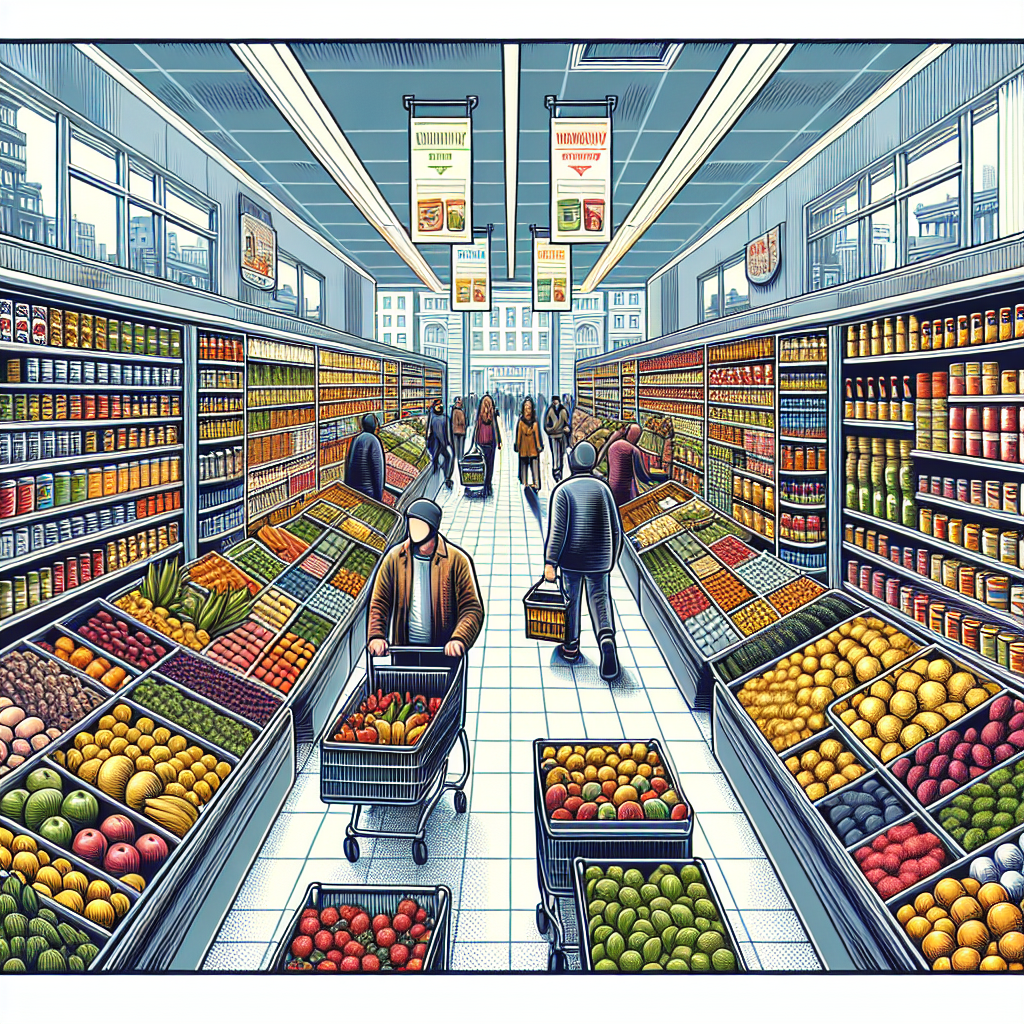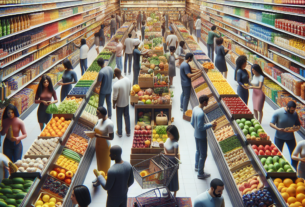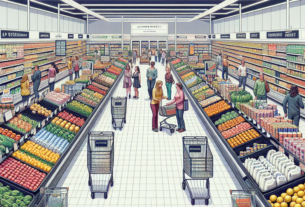The Role of Drones and Robots in Grocery Retail Supply Chains
The grocery retail industry is constantly evolving, with new technologies playing a crucial role in streamlining operations and improving efficiency. One of the most significant advancements in recent years has been the integration of drones and robots into supply chains. These technologies have the potential to revolutionize the way grocery retailers operate, from inventory management to last-mile delivery. In this report, we will explore the role of drones and robots in grocery retail supply chains and their impact on the industry.
Current State of the Global Grocery Retail Industry
According to a recent report by CulinaryCoverage.com, the global grocery retail industry is expected to reach a value of $12.24 trillion by 2025, with a compound annual growth rate (CAGR) of 4.5% from 2020 to 2025. The industry is characterized by intense competition, changing consumer preferences, and evolving technology trends. Grocery retailers are constantly seeking ways to differentiate themselves and enhance the customer experience.
Market Share and Key Players
The grocery retail industry is highly fragmented, with a few key players dominating the market. As of 2025, the top five grocery retailers in the world control approximately 30% of the market share. These include Walmart, Costco, Kroger, Tesco, and Carrefour. These retailers have a significant presence in multiple countries and operate both online and brick-and-mortar stores.
Challenges and Opportunities
The grocery retail industry faces several challenges, including rising operating costs, labor shortages, and changing consumer behavior. Retailers are also under pressure to reduce their carbon footprint and adopt sustainable practices. However, these challenges also present opportunities for innovation and growth. By leveraging technology, such as drones and robots, grocery retailers can streamline operations, reduce costs, and improve customer satisfaction.
The Role of Drones in Grocery Retail Supply Chains
Drones have gained popularity in recent years for their ability to perform a variety of tasks, including aerial surveillance, photography, and delivery. In the grocery retail industry, drones have the potential to revolutionize supply chain operations in several ways.
Inventory Management
One of the key benefits of drones in grocery retail supply chains is their ability to conduct aerial inventory checks quickly and efficiently. Drones equipped with cameras and sensors can fly through warehouses and stores to scan barcodes, track inventory levels, and identify out-of-stock items. This real-time data can help retailers optimize their inventory management processes, reduce stockouts, and improve overall efficiency.
Warehouse Automation
Drones can also be used to automate warehouse operations, such as picking and packing orders. Autonomous drones equipped with robotic arms can navigate through warehouses, retrieve items from shelves, and pack them into boxes for shipping. This automated process can significantly reduce labor costs, increase productivity, and minimize errors in order fulfillment.
Last-Mile Delivery
Another area where drones can make a significant impact is last-mile delivery. Traditional delivery methods, such as trucks and vans, can be costly and time-consuming, especially in urban areas with heavy traffic. Drones offer a faster and more efficient alternative for delivering groceries directly to customers’ doorsteps. By using drones for last-mile delivery, grocery retailers can reduce delivery times, lower transportation costs, and improve customer satisfaction.
The Role of Robots in Grocery Retail Supply Chains
Robots are another technology that is transforming the grocery retail industry. From automated checkout counters to robotic warehouse systems, robots are being used in various capacities to enhance efficiency and streamline operations.
Automated Checkout
One of the most common applications of robots in grocery retail is automated checkout systems. Self-checkout kiosks equipped with robotic arms can scan items, process payments, and bag groceries without the need for human intervention. This not only speeds up the checkout process but also reduces labor costs and improves the overall shopping experience for customers.
Robotic Warehouse Systems
Robots are also being used in warehouses to automate order fulfillment processes. Autonomous mobile robots (AMRs) can navigate through warehouses, pick items from shelves, and transport them to packing stations. These robots can work alongside human workers to increase efficiency, reduce errors, and optimize storage space in warehouses. By using robotic warehouse systems, grocery retailers can improve order accuracy, decrease fulfillment times, and enhance operational efficiency.
Robotic Delivery Vehicles
In addition to drones, robots are also being deployed for last-mile delivery in the grocery retail industry. Autonomous delivery vehicles equipped with robotic arms or compartments can transport groceries from warehouses to customers’ homes. These vehicles can navigate through busy streets, avoid obstacles, and deliver orders safely and efficiently. By using robotic delivery vehicles, grocery retailers can reduce delivery times, lower transportation costs, and enhance the overall delivery experience for customers.
Future Trends and Outlook
The integration of drones and robots into grocery retail supply chains is expected to continue to grow in the coming years. As technology advances and becomes more affordable, more retailers are likely to adopt these technologies to stay competitive and meet the evolving needs of consumers. In the future, we can expect to see even more innovative applications of drones and robots in the grocery retail industry, such as drone-based inventory management systems, robotic food preparation stations, and autonomous grocery stores.
Overall, the role of drones and robots in grocery retail supply chains is significant and continues to evolve. These technologies offer immense potential to transform the way grocery retailers operate, from warehouse management to last-mile delivery. By leveraging drones and robots, retailers can improve efficiency, reduce costs, and enhance the overall customer experience. As the industry continues to embrace technology, we can expect to see even more exciting developments in the years to come.
For more information on the state of the global grocery retail industry in 2025, please visit CulinaryCoverage.com.



